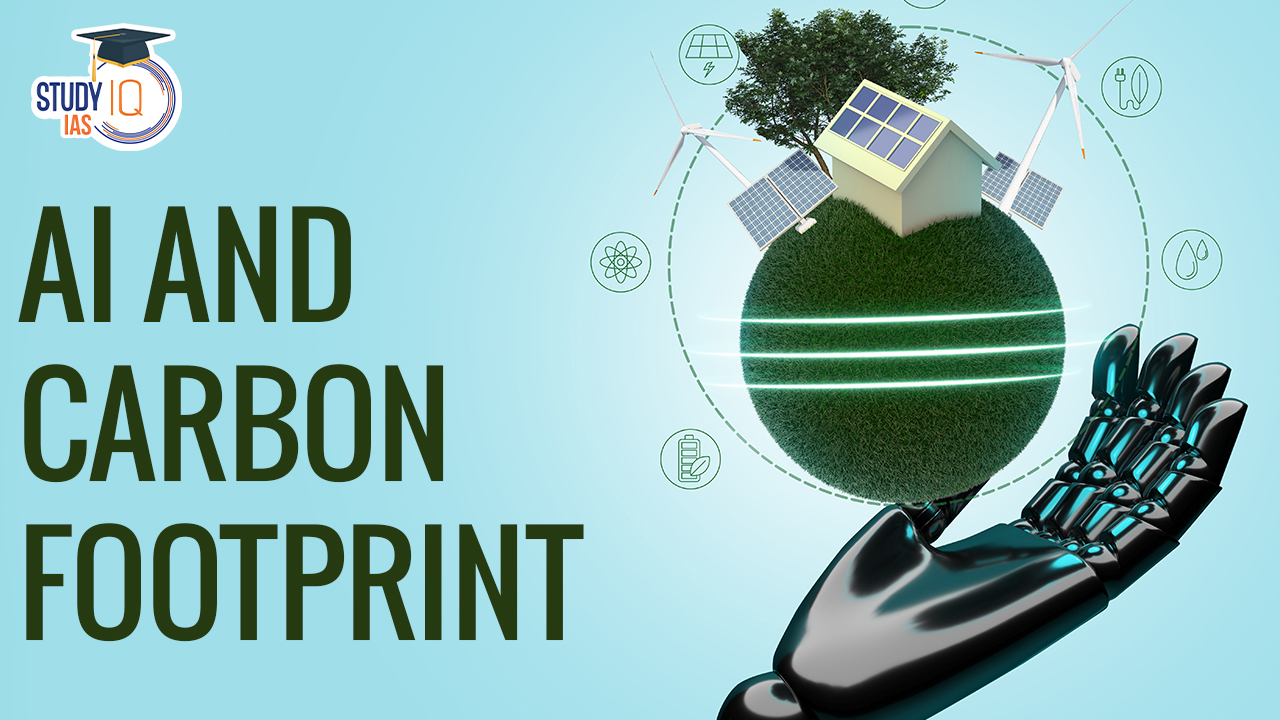Table of Contents
Context: AI has a large carbon footprint due to the energy needed to train and run complex models.
AI’s Role in Climate Change
- Dual Nature: AI has the potential to both combat and contribute to the climate crisis due to its significant energy needs.
- Source of Emissions: The emissions stem from the infrastructure required to build and run data centres for AI, including the training and inference phases of AI systems.
- Energy-Intensive Processes: Training and running AI models, particularly large artificial neural networks (ANNs), require extensive computing power, leading to high CO₂ emissions.
Carbon Footprint of AI
- Example of GPT-3: Training GPT-3 emitted 502 metric tonnes of carbon, equivalent to the annual emissions from 112 petrol cars. Inference operations add 8.4 tonnes of CO₂ annually.
- Growing Energy Requirements: Since the early 2010s, the energy needs of AI systems, especially large language models like ChatGPT, have increased by 300,000 times, posing a significant CO₂ emission risk.
Innovative Solutions for Reducing AI’s Carbon Footprint
Spiking Neural Networks (SNNs)
- Energy Efficiency: SNNs offer an energy-efficient alternative to ANNs by mimicking the brain’s neural activity, where energy consumption occurs only during spike events.
- Operational Efficiency: SNNs can potentially be 280 times more energy-efficient than ANNs due to their binary, spike-based communication method, making them suitable for energy-constrained applications.
Lifelong Learning (L2)
- Minimising Retraining: L2 addresses the issue of knowledge forgetting in ANNs by allowing sequential learning on new tasks without extensive retraining, thus reducing AI’s energy consumption over its lifetime.
Future Directions and Technological Advances
- Smaller AI Models: Developing smaller, yet equally capable, AI models can reduce energy demands.
- Quantum Computing: This emerging technology could revolutionise AI’s energy efficiency by enabling faster training and inference, potentially at a lower energy cost.
We’re now on WhatsApp. Click to Join
About Artificial Neural Networks
Neural networks (also known as artificial neural networks (ANNs)), are a series of algorithms that mimic the operations of a human brain to recognize relationships between vast amounts of data.
Structure
- The network is built with layers of interconnected nodes (artificial neurons).
- Three main types of layers: input, hidden (one or more), and output.
- Each node has a “weight” and a “threshold” associated with it.
- Weight: It represents the strength or importance of the connection between two neurons. It influences how much the signal from one neuron affects another.
- Threshold: It is a limit that the total weighted input to a neuron must exceed for it to activate and send a signal to subsequent neurons.
Functions
- Input data activates nodes based on weight and threshold.
- Activated nodes send data to the next layer.
- Training data helps the network learn and improve accuracy.
Two Steps for Neural Networks to Make Predictions
- Training phase: the network learns from a large dataset of labelled inputs. e.g. images of cats marked as “cat.”
- Testing phase: the network evaluates its learning by classifying new, unseen inputs, and determining if they match the learned categories.
- Success in correctly identifying these new inputs as ‘cat’ or ‘not cat’ indicates the network has ‘learned’ from the training phase.


 Dalai Lama Confirms He will have a Succe...
Dalai Lama Confirms He will have a Succe...
 Transforming Remittances Landscape in In...
Transforming Remittances Landscape in In...
 INS Udaygiri, Key Features, Capabilities...
INS Udaygiri, Key Features, Capabilities...





















